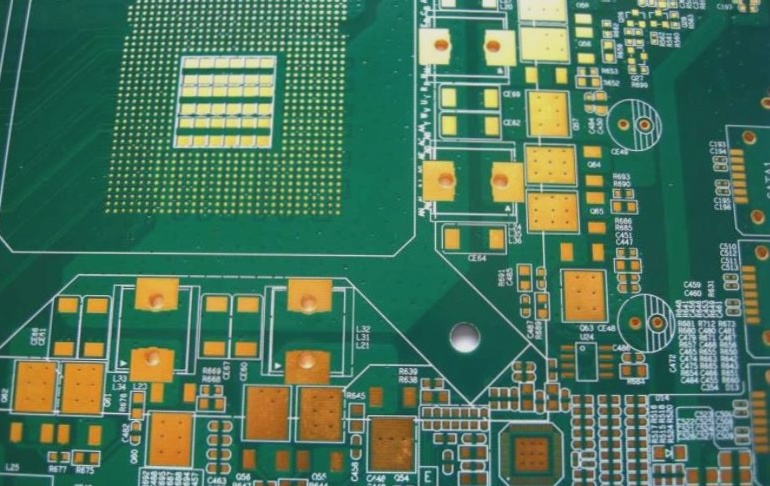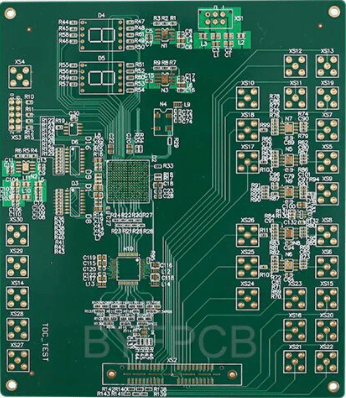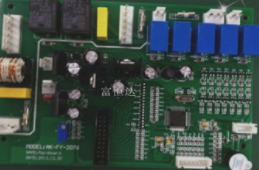Addressing Theoretical Conflicts in PCB Wiring
Grounding for Analog and Digital Circuits
In PCB design, balancing the theoretical need for isolated analog and digital grounds with practical constraints is crucial. Learn how to manage this challenge effectively.
- Theory vs. Practice: Ideal PCB design requires separate analog and digital grounds, but space limitations often make absolute isolation impractical.
- Practical Approach: Partition the PCB into ground islands for analog and digital sections, connected by controlled trenches for a balance between isolation and efficiency.
- Key Considerations:
- Avoid routing signal traces across the moat to maintain isolation.
- Keep return current paths short to minimize interference.
- Manage partitioning carefully to avoid ground loops or noise issues.
Crystal Oscillator and CPU Routing
Optimizing the connection between a crystal oscillator and CPU is essential for signal integrity. Explore practical strategies to overcome layout challenges.
- Theory vs. Practice: Short connections are ideal, but space constraints often lead to longer traces, impacting signal stability.
- Practical Approach: Use proper trace widths, minimize length, utilize ground and power planes, and consider differential pair routing for reliable performance.
High-Speed Signal Integrity and EMC/EMI Mitigation
High-speed signals are prone to EMI issues. Discover practical solutions to ensure signal integrity and minimize electromagnetic interference.
- Theory vs. Practice: Theoretical techniques may be challenging to implement practically due to board constraints.
- Practical Solutions:
- Utilize ground and power planes effectively to minimize EMI.
- Carefully route high-speed signals on controlled impedance layers.
- Consider signal shielding and decoupling capacitors for EMI mitigation.
Crystal Oscillator Stability and PCB Layout Optimization
The crystal oscillator, functioning as an analog positive feedback oscillation circuit, requires specific conditions for stable oscillation. Meeting loop gain and phase requirements is crucial for stable operation. However, the analog signal generated is highly sensitive to external disturbances. While adding ground guard traces can reduce interference, placing the oscillator too far from the chip may still expose it to noise from the ground plane. Therefore, placing the crystal oscillator as close as possible to the chip is essential to minimize external disturbances.
High-Speed Design Strategies for EMI and Signal Integrity
In high-speed PCB design, balancing EMI requirements with signal integrity is a common challenge. It is vital to ensure that components used to address EMI, such as resistors, capacitors, or ferrite beads, do not compromise the electrical characteristics of the signal. Optimizing trace routing and PCB stacking can help minimize EMI issues. Placing high-speed signals on inner layers reduces EMI exposure, while using resistors or ferrite beads at the signal termination point minimizes signal degradation.
Signal Integrity and Differential Pair Routing Techniques in High-Speed Designs
Signal integrity is a critical consideration in high-speed PCB design, especially for differential signal routing. Impedance matching is key to maintaining signal integrity. Factors such as the output impedance of the signal source, trace characteristic impedance, load end characteristics, and trace topology impact impedance matching. Careful trace termination and routing adjustments are essential for achieving proper impedance matching.
- For differential pairs, ensuring the length of the two traces matches as closely as possible is crucial.
- The distance between traces, determined by the required differential impedance, must remain constant.
Differential pairs can be routed in two main configurations: side-by-side on the same layer or one trace on an upper layer and the other on a lower layer (over-under). While the side-by-side configuration is more common, both approaches can work effectively as long as the distance between traces remains consistent.
5. Understanding Attenuation and Impedance in High-Speed PCB Design
- Differential wiring is crucial for signals with differential outputs at both ends.
- For clock signals with single-ended outputs, differential routing is not suitable.
Signal Integrity Challenges
When routing high-speed differential signals, mutual coupling between traces can enhance signal integrity by maintaining consistent impedance. However, concerns arise regarding increased signal attenuation and reduced transmission distance, especially above 1 GHz.
Factors Affecting Signal Attenuation
Conductor loss, such as skin effect, and dielectric loss in PCB materials are significant contributors to signal attenuation, especially at higher frequencies. The mutual coupling between differential lines can lower the characteristic impedance, potentially reducing signal voltage at the receiving end due to the voltage divider effect.
Managing Impedance Consistency
Proper routing of the differential pair is essential to manage impedance consistency. Inconsistent spacing between traces can lead to fluctuating differential impedance, causing signal integrity issues and timing delays. The distance between traces plays a critical role in maintaining consistent impedance.
Calculating Differential Impedance
The calculation of differential impedance involves both self-impedance of the trace (Z11) and mutual impedance caused by coupling between traces (Z12). The formula for differential impedance is approximately (2(Z11 – Z12)). Designing for a differential impedance of 100 ohms requires the trace’s characteristic impedance to be slightly higher than 50 ohms, determined using simulation software.
Improving Signal Integrity
Adding a termination resistor between the differential pair at the receiving end can help match impedance, minimize signal reflections, and enhance overall signal integrity in high-speed PCB designs.
This structured approach offers practical advice and industry insights for high-speed PCB design, addressing key technical considerations and best practices.




